Budgeting for energy efficiency may involve a bit of number crunching, but the energy and money your small business will save will make it worth your time. ENERGY STAR data shows that while small businesses in the U.S. spend more than $60 billion a year on energy, they can cut their utility costs by 10 to 30 percent when they implement strategic energy-saving tips. These savings can then be reinvested and go towards what truly matters to you: your business’s growth.
Learn how to develop an energy budget for your small business so you can start saving power and money.
Small Business Energy Audit
First, you need to look at your energy consumption and costs to understand where your money is going. How much does lighting or heating and cooling cost your business? How much do factors like cold Ohio winters affect your small business energy costs?
An energy audit can be a great first step to analyze your business's energy use and provide energy-saving tips and recommendations. Your historical usage and energy spend can then be used to help you create your new energy budget.
To perform your own energy audit, you will want to systematically inspect your business’s energy consuming equipment, such as lighting, air conditioning, heating, refrigeration, and water consuming equipment. When you inspect these various elements, you will want to take measurements of temperatures, pressures, power draw, and any additional factors that can be used to better understand the specific energy-using patterns of your facility.
When you conduct an energy audit, your findings will show where your business is spending the most money and using the most energy. The next step is finding energy efficient ways to cut down on that energy usage.
Energy Efficiency Action Plan
Once you have a clear understanding of how your money is being spent, you can begin to factor in energy efficiency as you plan out your energy budget. Use your energy bill review to help determine which energy-efficient products would best serve your business and save you money.
For example, based on your company’s energy use, new lighting retrofit could be a better investment than say a new HVAC system if that’s where you see a lot of money being spent. If your budget is small, switching from incandescent or fluorescent bulbs to LED light bulbs or simply cleaning your HVAC air filters could result in more energy savings.
If you have room in your budget to finance larger energy investments, you can consider replacing your office equipment with Energy Star-qualified printers, copiers, refrigerators, and TVs, or replace the desktop computers with laptops.
Energy Efficiency ROI
As you develop your action plan, you’ll need to determine how much those solutions could save on your business utility bill. Not all energy efficiency upgrades are created equal. For example, switching to LED bulbs might have a bigger return on investment than replacing your HVAC system.
To determine what works best for your small business, consider: Do you own the building? How long do you plan to stay there? If you are a renter, you might be better off looking at short-term energy-saving solutions, such as upgrading to a smart thermostat or cleaning your HVAC filters.
If your small business owns the building or if you have a long-term lease, larger investments like appliance upgrades or new HVAC systems will pay you back over the long term, so you’ll need to account for that in your energy budget.
Additional Energy Budget Considerations
Keep in mind that your energy budget should factor in other benefits that extend beyond the utility bill. Things like employee comfort and productivity as well as customer experience and satisfaction should be taken into consideration.
The harshness of fluorescent lights; for example, has been known to give workers headaches. Not to mention, the high amounts of heat emitted from fluorescent lights can lead to dehydration, heat exhaustion, loss of concentration, and mood swings. Factors like these ultimately end up lowering employee productivity and happiness. On the other hand, LED lights closely mimic natural light which can boost employee morale as well as productivity, all while being great energy savers.
Temperature can also affect customer satisfaction and the likelihood they’ll make a purchase. Keeping your business warm—but not uncomfortably hot—has been known to make customers more inclined to purchase products and associate your business with that “warm, fuzzy” feeling. One energy-saving tip for small businesses is to install a smart thermostat to help your business regulate temperatures for optimum customer satisfaction.
Energy Efficiency Financing
We understand that small business energy budgets can be tight. Need financing to help your small business become more energy efficient? On projects ranging from $100,000 to $500,000, NOPEC’s PACE (Property Assessed Clean Energy) loan program offers loans with interest rates as low as 2.5% in order to help commercial property owners finance energy efficiency and renewable energy improvement projects.
NOPEC's STEP (Savings Through Efficiency Program) loan program will provide loans of $5,000 to $100,000 for eligible projects. The STEP loan provides 3% fixed-rate financing for up to 10 years, giving commercial property owners up-front capital to complete property improvements that will reduce energy costs.
Learn more about the benefits of NOPEC's Energy Efficiency Financing so you can start saving on your small business energy costs.


